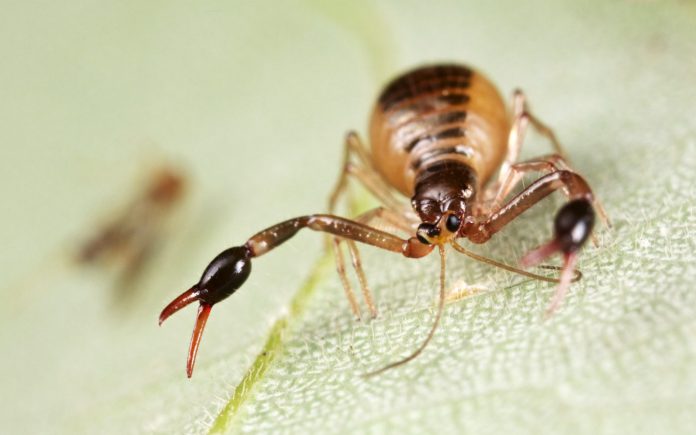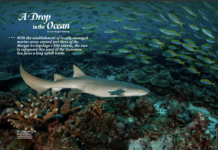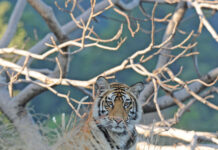
By YD Bar-Ness
A tiny animal that escapes our notice can be a fascinating and complex discovery. You may have heard about scorpions – the arthropod with the famous stinging tail. But have you ever heard of the false scorpion, the land crab, the book lice, or the pseudoscorpion? All three are names for the same group of miniscule animals with a fossil history almost 400 million years old.
The 3,000 species of Pseudoscorpionida are abundant, diverse and found throughout the world in humid places, such as moss beds and cave floors. With two large pincer claws, they superficially resemble true scorpions, but they lack the curved and flexible sting at the rear. They generally range from two to eight millimetres in length and are relatively unknown to most people.
Like spiders, mites and ticks, false scorpions are arachnids with eight legs. Like spiders, they have been able to colonise completely dark subterranean environments. Their front pincers, known as pedipalps, contain sensitive hairs and can catch prey by the sense of touch. These giant claws also contain a poison gland with which to immobilise prey. Despite their creepy-crawly appearance, false scorpions pose no danger to humans.
Pseudoscorpions actually demonstrate some of the most fascinating examples of mating behaviour and parental care in the invertebrate world. They have an elaborate and enchanting mating dance: The male vibrates and poses before the female, places his contribution on the ground, and then they move together in a intricate dance over this small territory.
Unlike insects, young arachnids look like miniature versions of adults. The mothers will take care of their offspring by carrying them and protecting them from predators and the elements. As they get older, they will ride around on her back, as she forages in her environment. In some species, mothers allow themselves to be eaten by their offspring. This provides the newer generation with a nutritional head start towards their own adulthood – and discourages them from eating one another.
False scorpions are strangely beautiful animals, with their segmented bodies displaying compact organisation and toughness. If you’re fortunate enough to find one of these cryptic creatures, take a moment to watch them as they go about their business. You will discover that despite their very small form, their behaviour is nothing if not complex.
For more stunning stories and photographs from this issue, check out Asian Geographic Issue 110.










